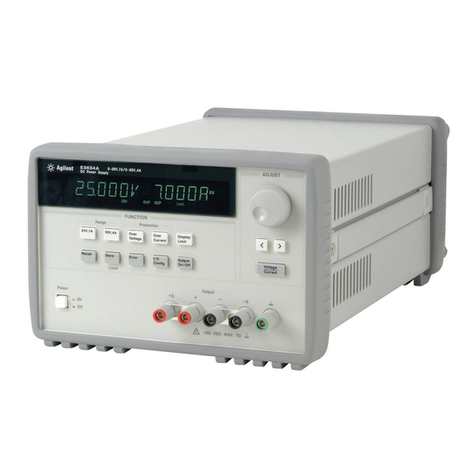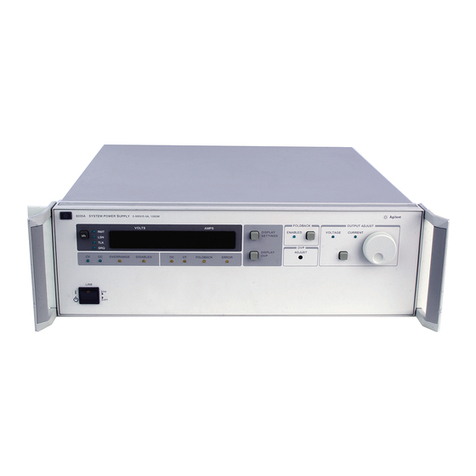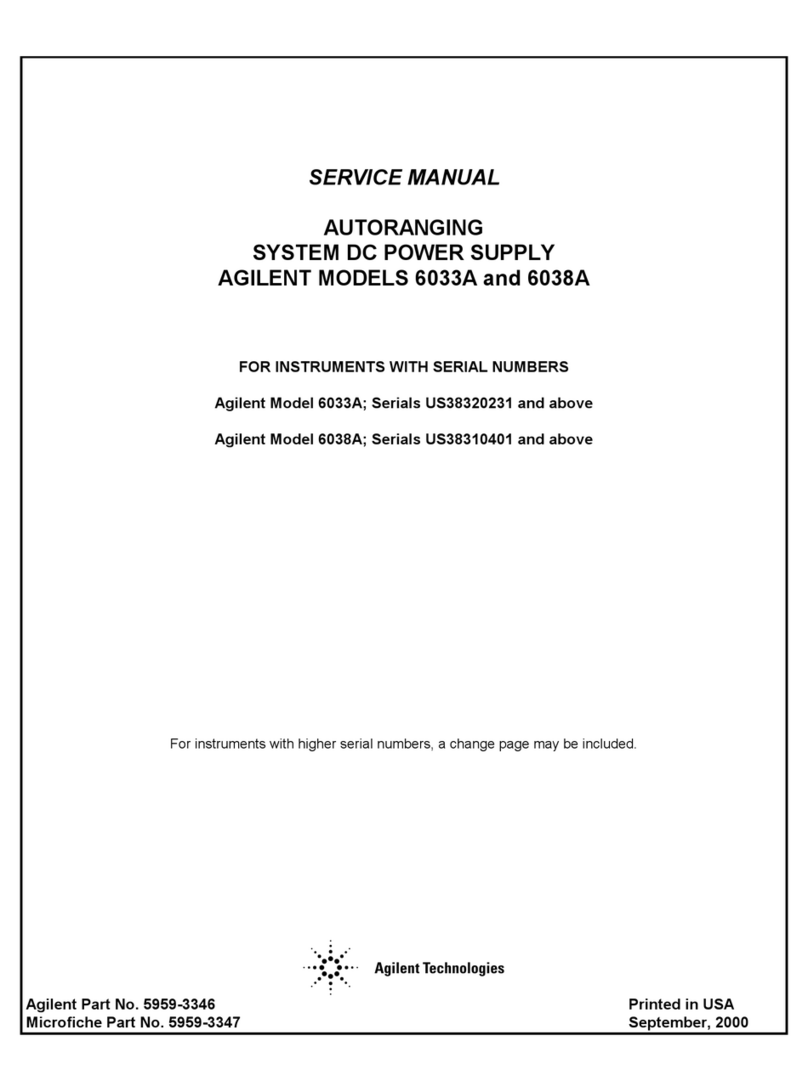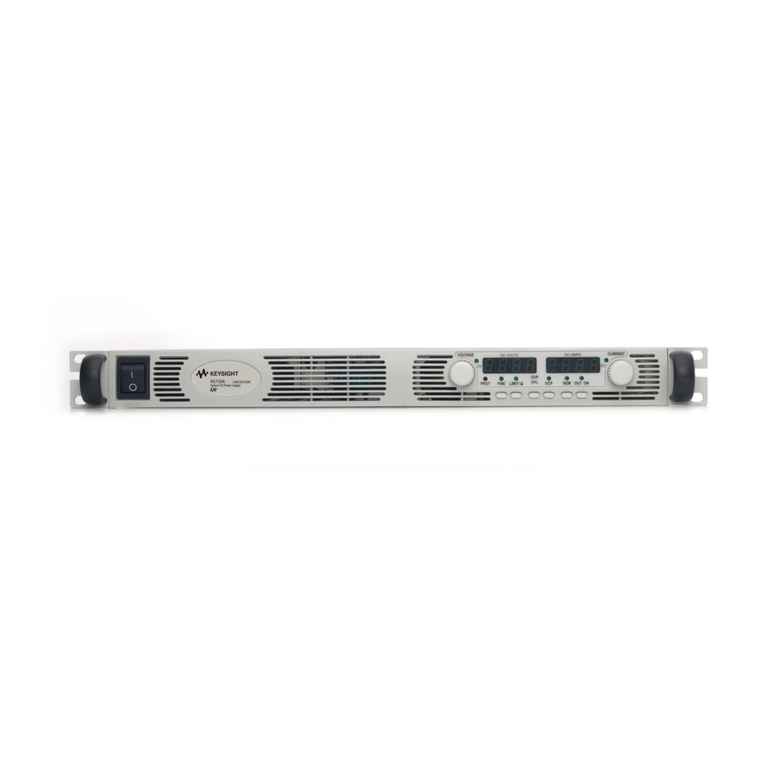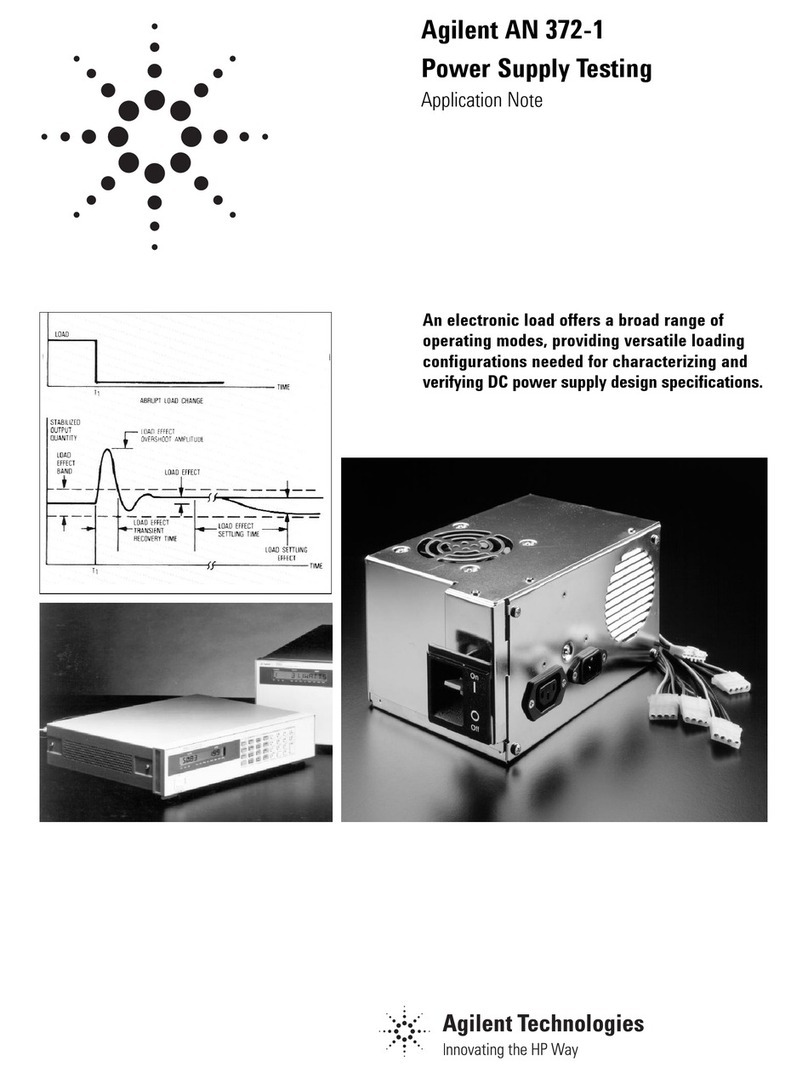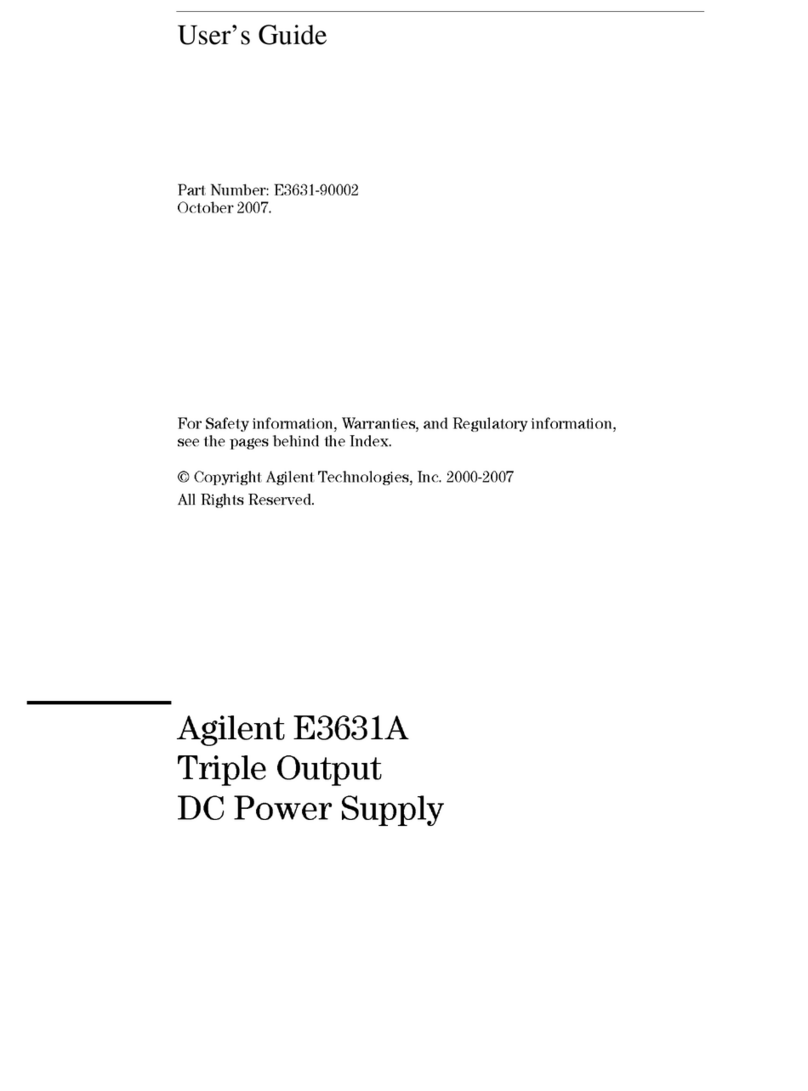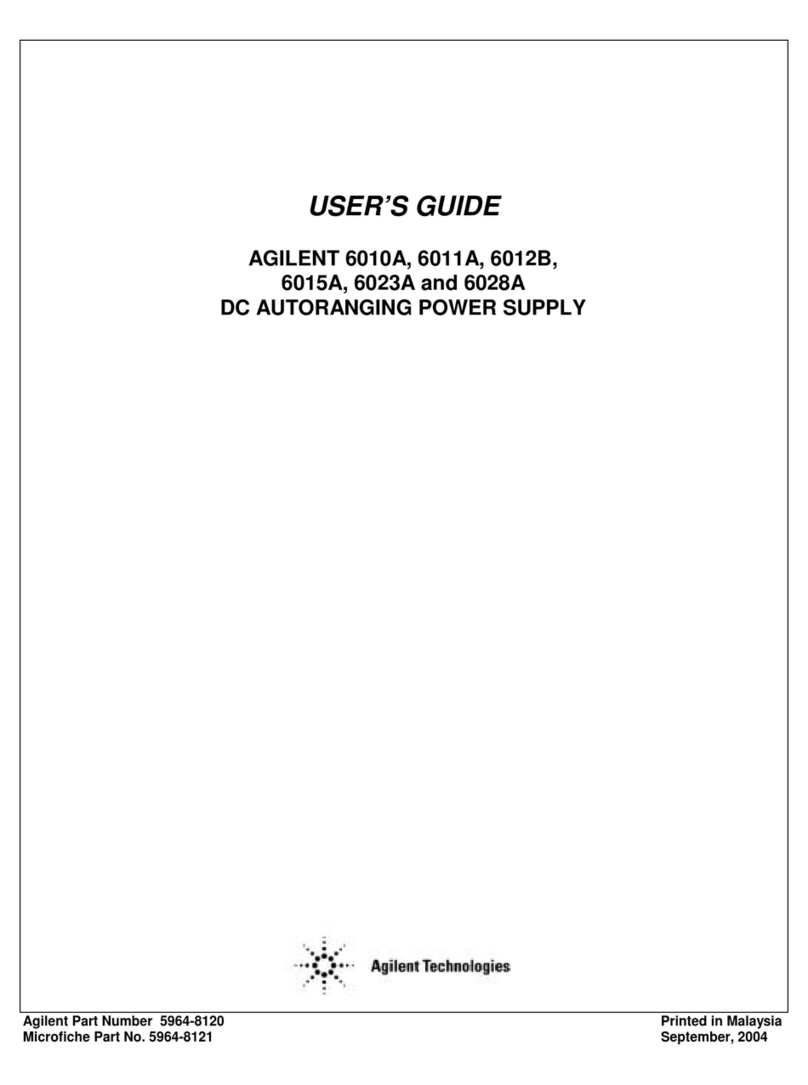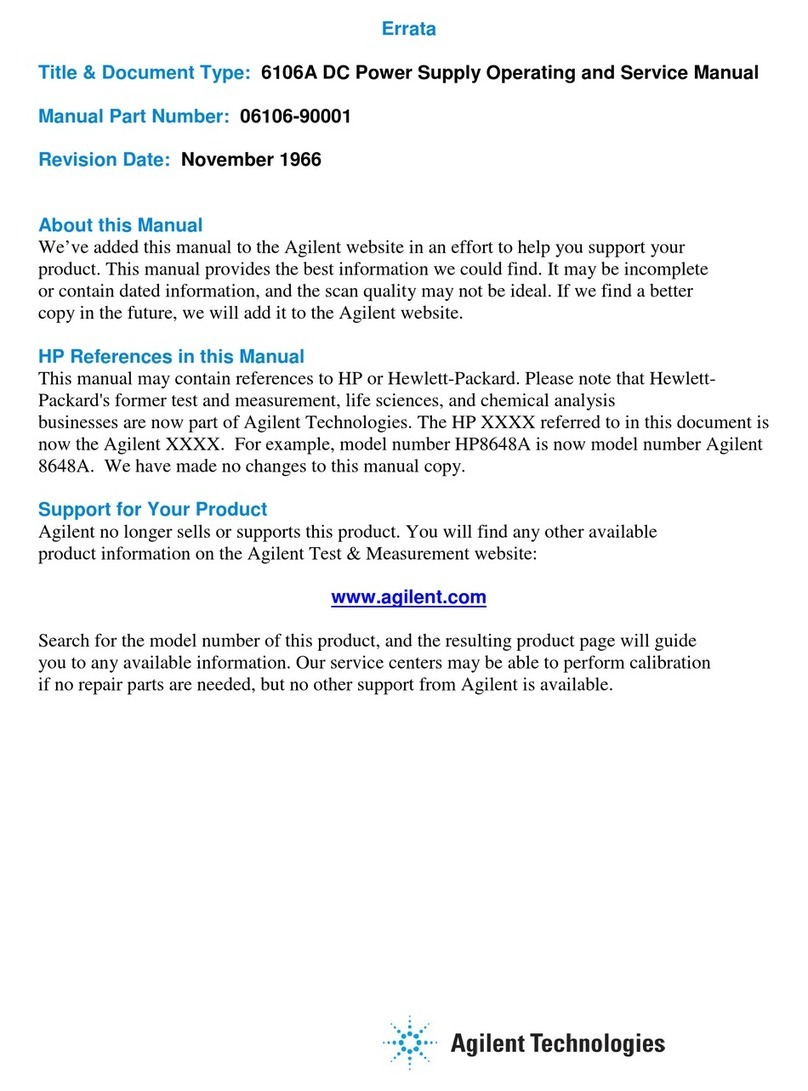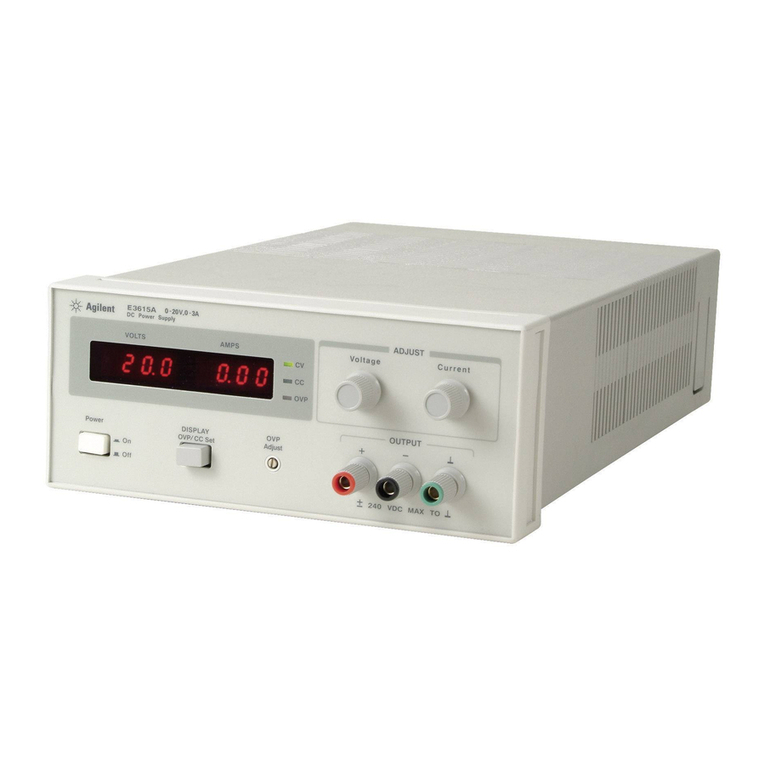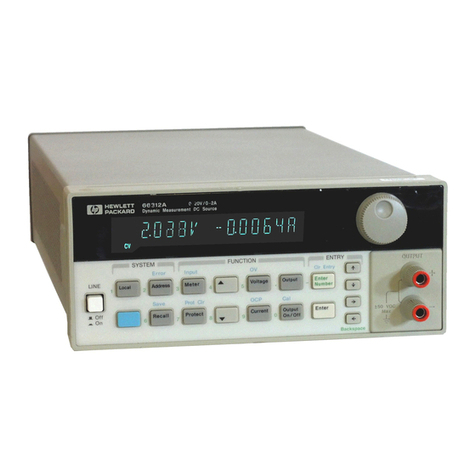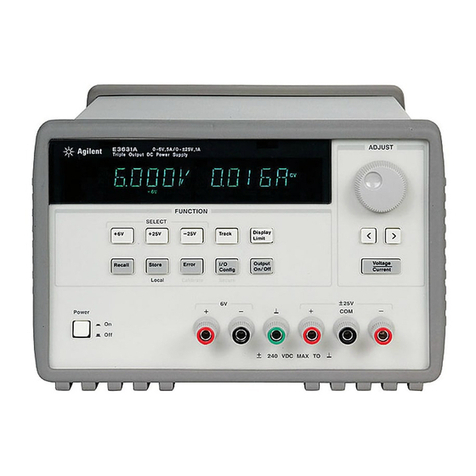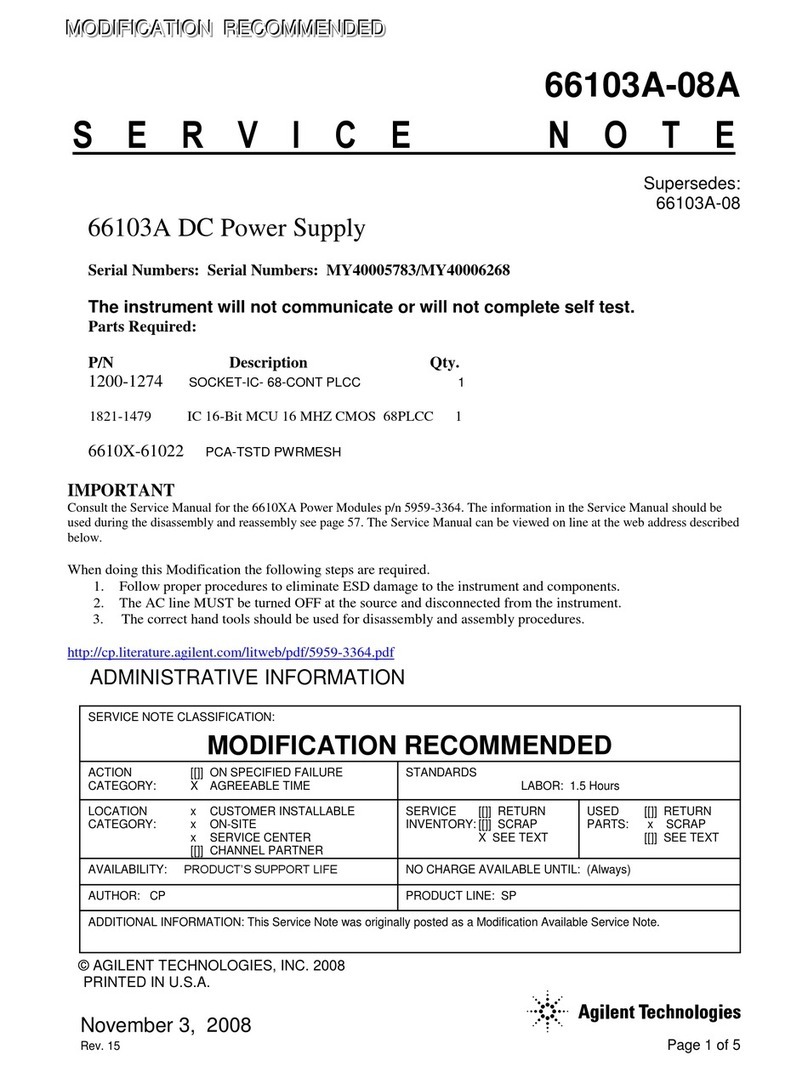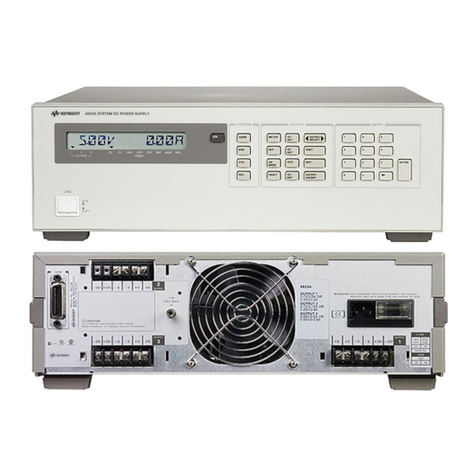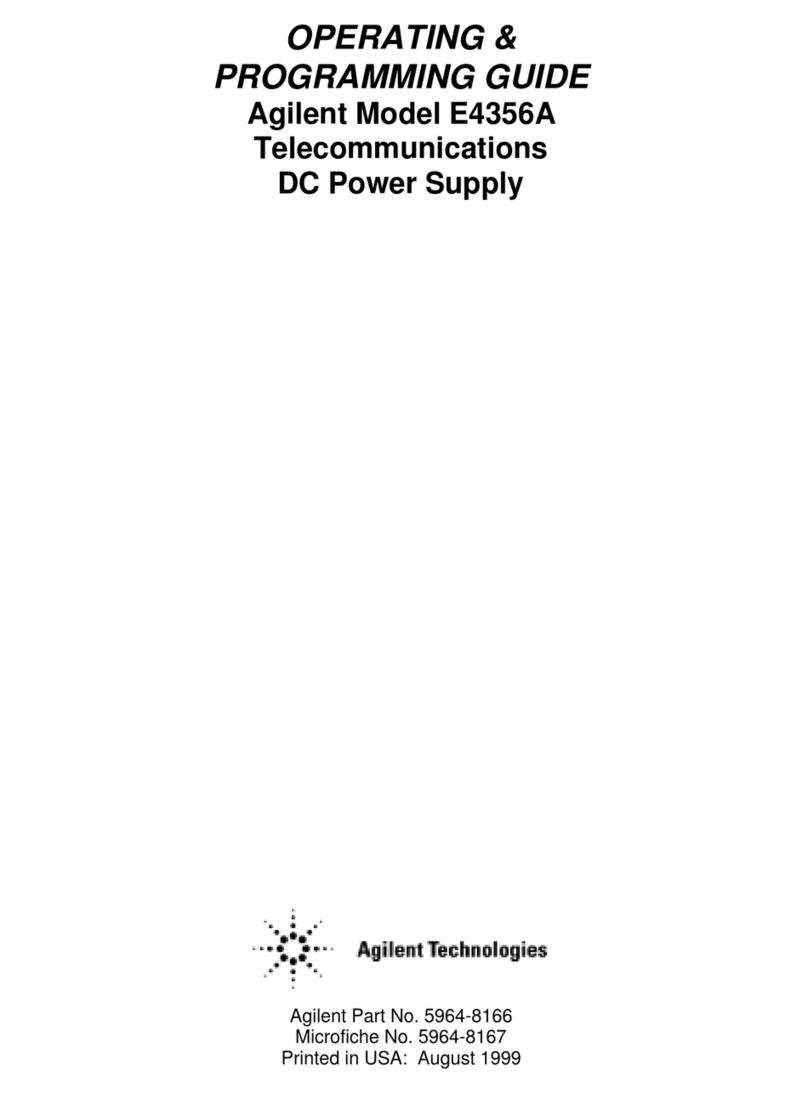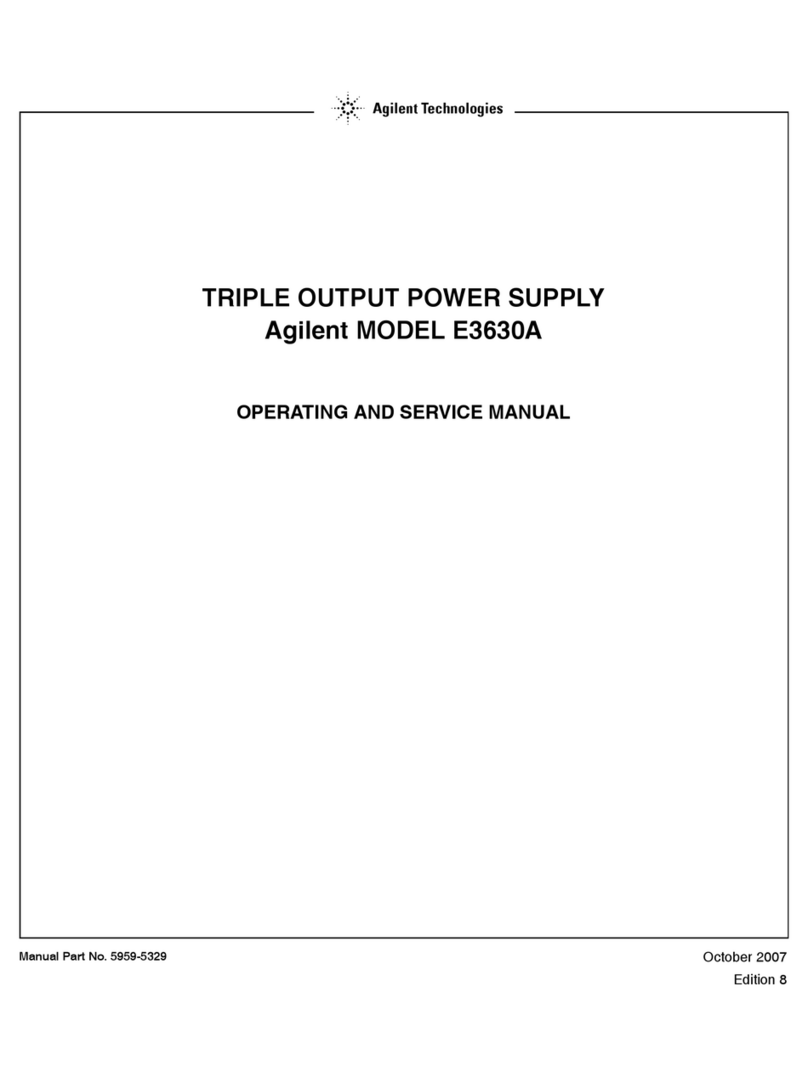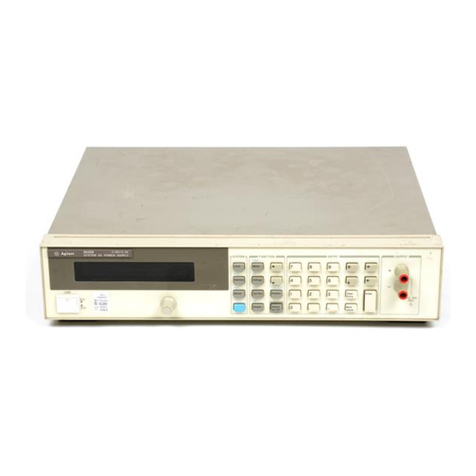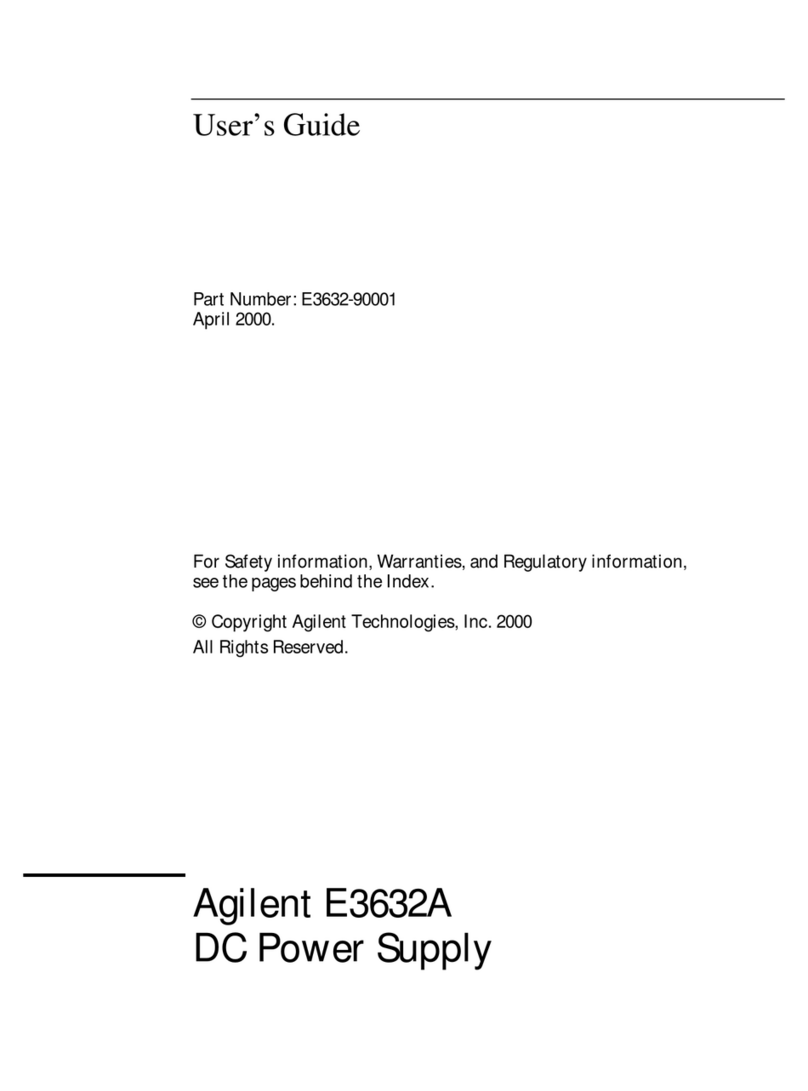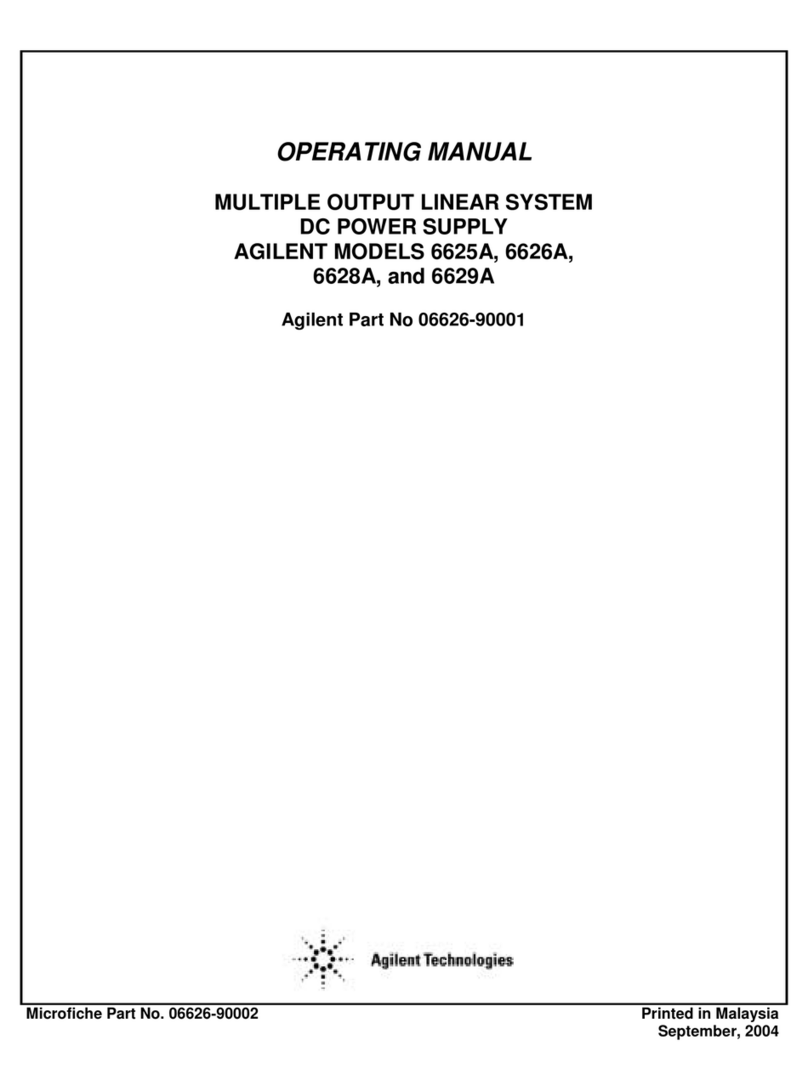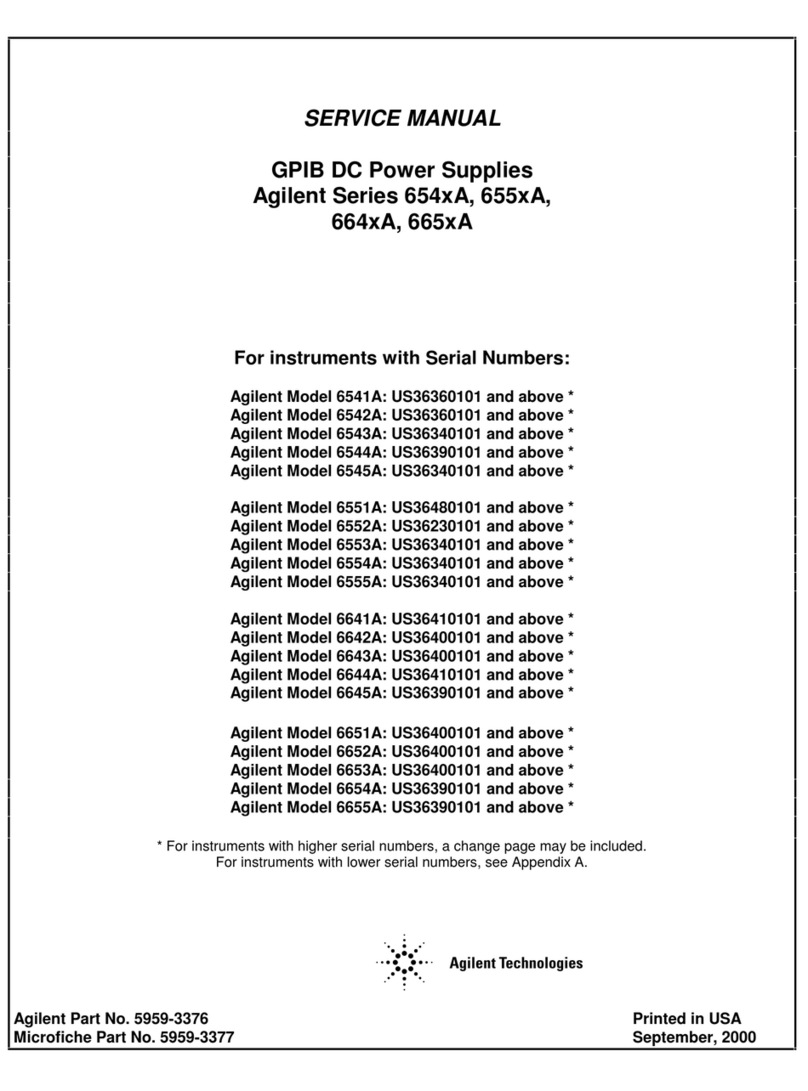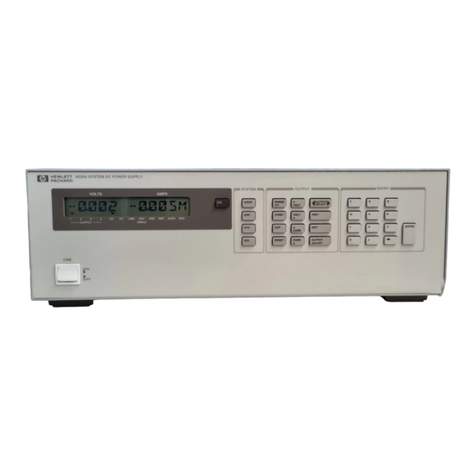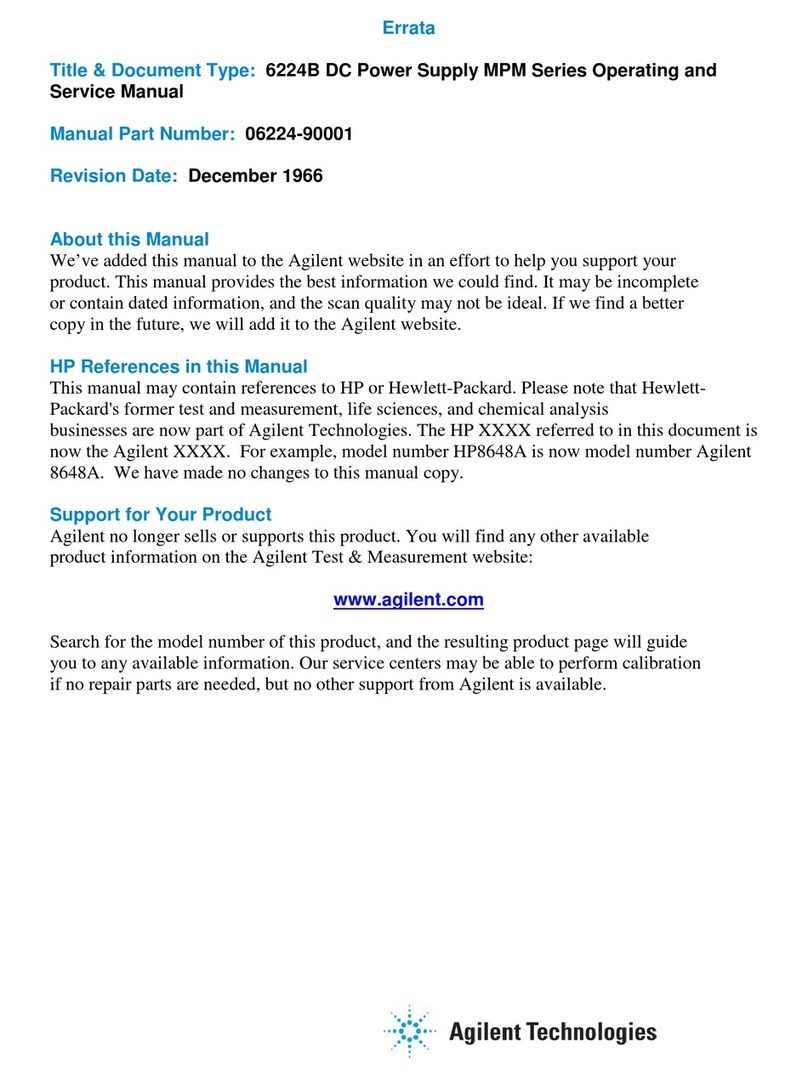
1-7
Before applying power to the supply, chec the label on the
heat sin to ma e certain that the supply's line voltage option
agrees with the line voltage to be used. If the option does not
correspond to your line voltage, refer to paragraph "LINE
VOLTAGE OPTION CONVERSION" in the service section
before applying power.
TURN -ON CHECKOUT ROCEDURE
a. Connect line cord to po er source and turn LINE
s itch on.
b. Push +6V METER s itch and, ith no load con-
nected, vary +6V VOLTAGE control over its range
and check that the voltmeter responds to the control
setting and the ammeter indicates zero.
c. Set the +6V VOLTAGE control to 6 volts and short the
+6V output terminal to COM (common) terminal
ith an insulated test lead. The ammeter should
indicate a short-circuit output current of approximately
1.0 A. Remove the short from the output terminals.
d. Push the +20V METER s itch and turn Tracking
Ratio control fully clock ise to the Fixed position.
With no load connected, vary ±20V VOLTAGE control
over its range and check that the voltmeter
responds to the control setting and the ammeter indi-
cates zero.
e. Set the ±20V VOLTAGE control to 20 volts and
short the +20V output terminal to the COM terminal
ith an insulated test lead. The ammeter should
indicate a short-circuit output current of 0.55 A ± 5%.
Remove the short from the output terminals.
f. Repeat steps (d) and (e) for -20 V output.
g. Adjust the +20V output to 20 volts. Then push -20V
METER s itch and check the effect of the Tracking
Ratio control on the voltage of the -20V output. The -
20V output should be adjustable from less than 0.5
volts to a maximum of 19 to 21 volts.
If this brief checkout procedure or later use of the supply
reveals a possible malfunction, see the service information
section for detailed test, troubleshooting, and adjustment pro-
cedures.
O ERATION
This po er supply can be operated individually or in parallel
or series ith another supply (see Parallel and Series Opera-
tion paragraphs). All output terminals are isolated from
ground. The ±20V and +6V outputs use a single common out-
put terminal. This common (COM) terminal or any one of the
other output terminals may be grounded to the chassis at the
front panel ground terminal ( in Figure 2), or all outputs may
be left floating. Loads can be connected separately bet een
each of the 0 to ±20V output terminals and the COM terminal,
or bet een the -20V and the +20V terminals for a 0 to 40V
output. Each output voltage or current can be quickly selected
for monitoring ith the push-button meter s itches. To moni-
tor the 0 to 40V output voltage, add the voltmeter readings of
the +20V and -20V output and use either the +20V or the -
20V meter to measure the current.
Tracking Ratio Control
With the Tracking Ratio control in the Fixed position, the volt-
age of the -20V supply tracks that of the +20V supply ithin
1% for convenience in varying the symmetrical voltages
needed by operational amplifiers and other circuits using bal-
anced positive and negative inputs.
Turn the Tracking Ratio control counter clock ise out of the
Fixed position to set the voltage of the -20V supply lo er than
that of the +20V supply. The negative supply can be set from
a minimum of less than 0.5 volts to a maximum ithin 5% of
the +20V supply's output. Once this is done, the ±20V voltage
control still controls both outputs and maintains a constant
ratio bet een their voltages.
Overload Protection Circuits
±20-Volt Curr nt Limit. The +20V and -20V outputs are indi-
vidually protected against overload or short circuit damage by
separate current limit circuits to limit the output current to 0.55
A ± 5%. (This is 110% of the maximum rated output.) If a sin-
gle load is connected bet een the +20V and -20V outputs,
the circuit set for the lesser current limit ill limit the output.
No deterioration of supply performance occurs if the output
current remains belo the current limit setting.
+6V Curr nt Foldback. The overload and short-circuit pro-
tection circuit for the +6V output reduces the output current
limit as the output terminal voltage decreases. (The operating
region of the +6V output is enclosed by heavy lines in Figure
4.) The maximum rated output current is 2.5 A and the current
limit is factory-adjusted to operate at 2.75 A ± 5% hen the
output is 6 volts. At lo er output voltages, the circuit reduces
the maximum obtainable output current linearly until 1 A ±
15% flo s hen the output is shorted. The short-circuit cur-
rent can not be adjusted.
During the actual operation of the ±20V and +6V outputs, if a
load change causes the current limit to be exceeded, the OL
LED is lighted. If overload conditions occur, the ±20V supplies
will protect the load by limiting the current to 0.55 A and the
+6V supply will protect the load by reducing both voltage and
current simultaneously along the foldbac locus as shown in
Figure 4. The ±20V and +6V supplies are self restoring; that
is, when the overload is removed or corrected, the output
voltage is automatically restored to the previously set value.
Operation Be ond Rated Output
The supply may be able to provide voltages and currents
greater than its rated maximum outputs if the line voltage is at
or above its nominal value. Operation can be extended up to
5% over the rated output ithout damage to the supply, but
performance can not be guaranteed to meet specifications in
